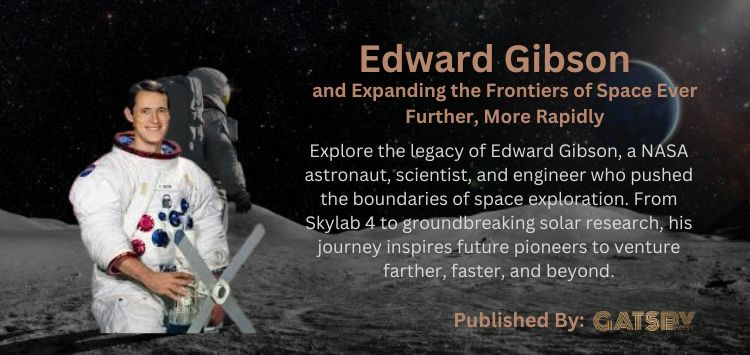In the chronicles of space exploration, few names carry as much weight as Edward Gibson. A NASA astronaut, scientist, and engineer, Gibson’s contributions to space research and human sresilience in orbit have made a lasting impact on our comprehension of the final frontier. His progression from a young aerospace engineer to a record-setting astronaut is truly inspirational, reminding us that the quest for knowledge is limited solely by our desire to reach beyond the conventional.
A Legacy in Space Exploration
Edward Gibson’s name is emblematic of transcending boundaries—both scientific and human. As a member of NASA’s astronaut corps, he contributed significantly during one of the most pivotal eras of space exploration. Serving as the science pilot on Skylab 4, the concluding mission of America’s inaugural space station, Gibson and his crew spent 84 days in space, establishing a record for the longest human spaceflight at that time. His mission was not merely a demonstration of endurance; it represented a significant advancement in our understanding of how the human body acclimatizes to prolonged periods in microgravity.
The mission of Skylab 4 centered on solar observations, and Gibson, drawing upon his physics background, was crucial in investigating solar phenomena. His efforts facilitated the progression of subsequent space missions, including the International Space Station and deep-space exploration initiatives. His research continues to serve as a foundation in the examination of the sun’s influence on Earth and space weather, shaping contemporary scientific methodologies and space policy.
Farther, Faster and Inspiring the Next Generation
The narrative of Edward Gibson transcends personal accomplishment; it stands as a symbol for aspiring scientists, engineers, and explorers. His career illustrates that the future is owned by those who dare to challenge the limits—who endeavor to venture farther, faster, and higher than ever before. Whether it be the Artemis missions targeting the Moon or the ambitious aspirations for Mars colonization, Gibson’s legacy acts as a beacon for today’s space pioneers.
His commitment to science and space exploration emphasizes the significance of resilience. Gibson’s path to becoming an astronaut was characterized by years of rigorous training, intellectual inquisitiveness, and a relentless pursuit to enhance human capability. His achievements affirm that with determination and fervor, the stars are attainable.
The Power of Exploration
Edward Gibson’s influence extends beyond his individual missions. His work established a groundwork for future explorations, ensuring that humanity persists in its quest to comprehend the universe. As space agencies and private enterprises strive for more ambitious endeavors, the insights gained from Skylab 4 remain pertinent. We find ourselves in an era where space travel is becoming increasingly accessible, and the spirit of pioneers like Gibson continues to motivate the dreamers and doers of today.
As we are positioned on the brink of a new space age, in which interplanetary travel transcends science fiction to become an imminent reality, Edward Gibson’s expedition serves as a reminder that human ambition knows no bounds. Space continuously awaits, and we must venture farther, faster, and beyond—just as he did.
Edward Gibson represents more than a mere name in history; he embodies the potential of what can be achieved when we have the courage to dream and investigate the unknown.
Published by Gatsby Press


